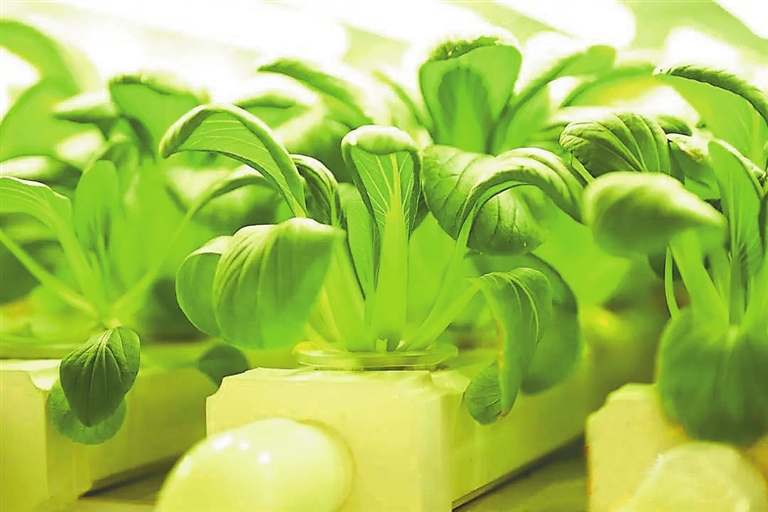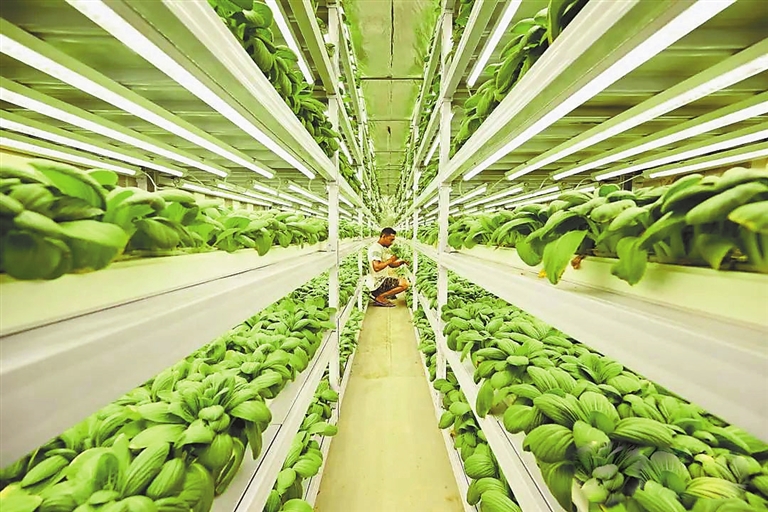

FOUR years ago, two Chinese young men started planting vegetables in the desert in Qatar. Now, vegetables supplied by their farm added flavor to the 2022 FIFA World Cup in the past a few weeks. The farm in the desert not only supplied vegetables during the World Cup from Nov. 21 to Sunday but also provide home delivery services to locals. “Our newly picked vegetables can be delivered to stores or people’s homes within two hours,” said Gao Yuntao, co-founder of the vegetable planting team. As Qatar is located in the tropical desert, it imports most of its vegetables and fruits, and used to have to import all of its vegetables. In recent years, Qatar has rolled out a national strategy on food and vegetable security, and decided to introduce key technologies from major vegetable producing countries including China to improve its vegetable self-sufficiency rate. “Vegetables were very expensive in Qatar. The country used to import 99.9% of its green vegetables like Chinese cabbage, lettuce and spinach. So I came up with the idea of planting vegetables here,” Gao said. After obtaining his master’s degree, Gao started his entrepreneurial journey to Qatar, and began exploring the possibility of planting vegetables in the desert. After painstaking effort, he and his partner Ling Yuhao finally became the first team to successfully plant vegetables in Qatar. Some people from other countries tried planting green vegetables in Qatar more than 10 years ago, but all of them failed. Due to the harsh climatic conditions, it wasn’t all plain sailing for Gao’s team on their journey. According to Gao, the team tried 45 kinds of seeds from seven countries before deciding on the right seeds for Chinese cabbage, which is now one of the farm’s most successful products. Unlike most farms, the one Gao and Ling have built uses abandoned shipping containers to plant its vegetables. The containers have been converted into smart plant factories with LED lights and can maintain interior temperatures of between 22 and 28 degrees Celsius, thanks to advanced vegetable planting technologies provided by the Chinese Academy of Agricultural Sciences (CAAS). Since 2019, an expert team jointly set up by experts from the Institute of Urban Agriculture (IUA) of the CAAS and other research institutes and enterprises has developed key technologies and methods for planting vegetables, such as growing plants in nutrient solutions and stereoscopic cultivation, said Qi Zhiyong, chief scientist of the innovation team of the IUA. “The sunlight is intense in desert areas. Shading out the sunlight can greatly reduce the consumption of energy and increase production,” Qi said. To avoid the strong sunlight in the desert, Chinese experts brought an LED light environment control technique to ensure the plants’ need for light. “Different plants need different types of light to grow. We have developed special LED light formulas for different vegetables as well as related equipment,” Qi said. Moreover, the IUA has helped improve the pattern of vegetable production in Qatar through the combination of hydroponics and solid active fiber soil technique, or the Leitu technique. “The latter replaces soil with an ecological material mainly made from straw, cotton stalks and other agricultural and forestry wastes,” said Qi. “Leitu technique has significantly expanded the variety of vegetables that can be grown in Qatar, increased the density of planting and reduced the difficulty in environment controlling, thus ensuring a high output with low energy consumption,” he said. The combination of hydroponics and the Leitu technique has changed the model of vegetable production in Qatar. “Hydroponics mainly cultivates leafy vegetables, while the Leitu technique provides growing conditions for more varieties of vegetables such as eggplants, tomatoes and cucumbers. Currently, we are discussing with our Qatar partners to expand the cultivation scope and grow more types of vegetables,” Qi said. According to the IUA, China’s technology has increased vegetable production in Qatar from two varieties three years ago to more than 30 varieties, including six types of lettuce, four types of collard, five types of peppers, cabbage, spinach and celery. (People’s Daily, Xinhua) | 
